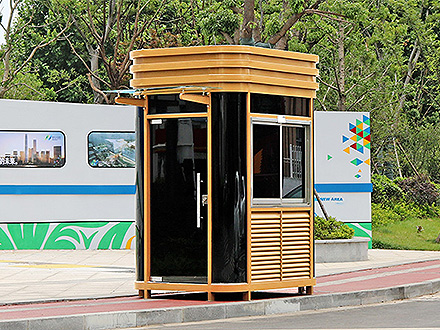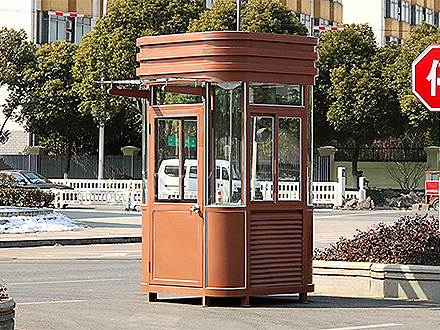Scientists have developed a microscopic engine, the smallest in the world, that they say is the first one capable of driving nanobots, including medical robots that could travel through the body.科学家研制出一种微型引擎,它是世界上大于的引擎。科学家们回应,这是第一种能驱动纳米机器人——还包括能在人体中行驶的医用机器人——的引擎。
The prototype device, known as an actuating nano-transducer or Ant, combines microscopic gold balls with a special polymer gel. It generates a propulsive force on a microscopic scale that is a hundred times greater per unit weight than any known motor or muscle. 这一原型设备称作作动纳米换能器(actuating nano-transducer)或“蚂蚁”(actuating nano-transducer的首字母简写Ant),由微型金球和一种类似的聚合物凝胶组合而成。它可产生一种微观尺度上的推动力,其单位重量发动机是任何未知马达或肌肉的100倍。“People have been talking about making nanobots for many years but they do not exist yet,” said Professor Jeremy Baumberg, leader of the project at Cambridge university. “Why not? Because so far there has been no way of making them move through liquids — which is like swimming through treacle on the nanoscale because the molecular forces are so strong.” “多年来,大家仍然在谈论生产纳米机器人,但它们仍并未问世。
”剑桥大学(Cambridge)教授、该项目带头人杰里米邦伯格(Jeremy Baumberg)说道,“为什么呢?这是因为以后今天,我们仍无法让纳米机器人在液体中移动——这就看起来在纳米尺度的糖浆中游泳,分子力过于强劲了。”He says Ant engines, described for the first time in Proceedings of the National Academy of Sciences, would provide sufficient power. “Like real ants they provide large forces for their weight,” he said. “The challenge we now face is how to control the force for nano-machinery applications.” 他说道,“蚂蚁”引擎——最初公布于《美国国家科学院院刊》(Proceedings of the National Academy of Sciences)——将获取充裕的动力。“就像确实的蚂蚁一样,它们需要获取比自身重量小得多的力量。
”他说道,“我们目前面对的挑战是,如何掌控这一力量为纳米机械所用。”The Ant is powered by physical rather than chemical reactions. It contains gold nanoparticles, each about 0.06 microns, or a thousandth of the width of a human hair, in diameter in water with a gel-like polymer called pNIPAM. “蚂蚁”的动力源自物理反应而不是化学反应。它包括金纳米颗粒,每个颗粒的直径约为0.06微米(相等于人类头发宽度的千分之一),这些颗粒与一种取名为凝N-异丙基丙烯酰胺(pNIPAM)的凝胶状聚合物一起冷水在水里。
When the temperature is above the critical temperature of 32C, the gold particles are bound tightly together with the polymer through intermolecular attraction. When it falls below 32C, the polymer suddenly absorbs water and expands — and the gold particles are pushed rapidly apart like a spring. 当温度升到临界温度32摄氏度以上时,金颗粒通过分子间吸引力与聚合物一道被抱住束缚在一起。当温度降至32摄氏度以下时,聚合物忽然吸取水分并收缩——挤满的金颗粒被较慢引前行来,就像弹簧一样。“It’s like an explosion,” said Tao Ding, another member of the team. “We have hundreds of gold balls flying apart in a millionth of a second when water molecules inflate the polymers around them.” “这就看起来发生爆炸,”该团队的另一成员Tao Ding说道,“当水分子让金颗粒周围的聚合物收缩时,数百个金球在百万分之一秒内飞出出去。
”The reaction is completely and rapidly reversible, experiments show. When the temperature rises again, the Ant stores a large amount of elastic energy in a fraction of a second as the polymer coating expels water from the gel and contracts around the gold particles. “The whole process is like a nano-spring,” said Prof Baumberg.实验指出,这一反应是几乎、较慢共轭的。当温度再次增高时,随着聚合物包覆物把水分排泄凝胶并环绕金颗粒收缩起来,“蚂蚁”可在瞬间储存大量弹性能。“整个过程就看起来纳米弹簧,”邦伯格教授说道。The prototype Ant uses laser light to control the system’s temperature but other mechanisms could be used instead. The transition point could also be adjusted, for example to set the energy release point close to 37C — the human body’s normal temperature. “蚂蚁”原型引擎用激光来控制系统的温度,但也可使用其他机制。
临界点也可调整,比如把能量获释点原作为相似37摄氏度——人体的长时间温度。The Ant might drive a nanobot through a series of piston strokes, rather like a car engine but on a scale many billions of times smaller. “蚂蚁”或可通过一系列活塞冲程来驱动纳米机器人,这很像汽车的引擎,只是其尺寸是后者的数十亿分之一。“The concept can underpin a plethora of future designs,” Prof Baumberg said. The team is working with Cambridge Enterprise, the university’s commercialisation arm, to develop practical applications for the technology.“这一概念可为大量的未来设计获取承托,”邦伯格教授说道。
该团队于是以与剑桥大学的商业化机构“剑桥实业”(Cambridge Enterprise)合作,研发这项技术的实际应用于。
本文关键词:酷游ku官网
本文来源:酷游ku官网-www.andymdavidson.com






